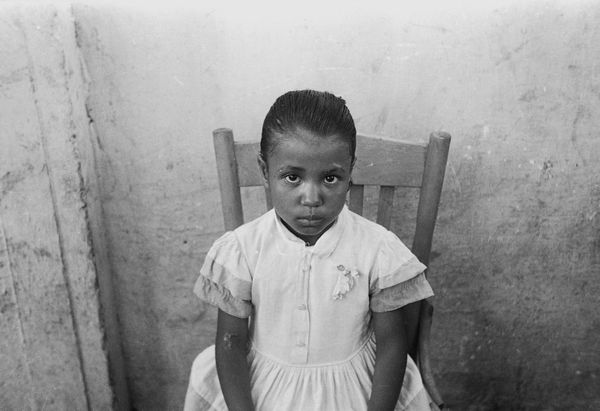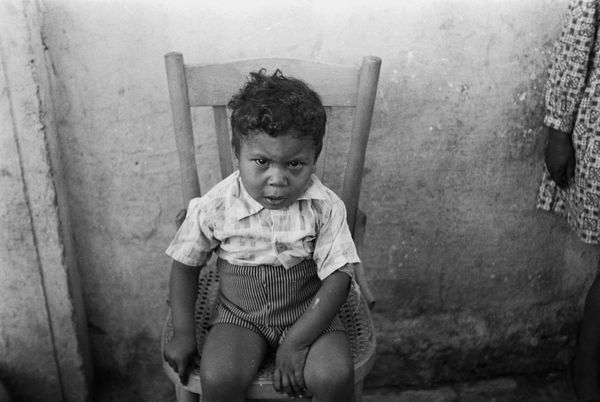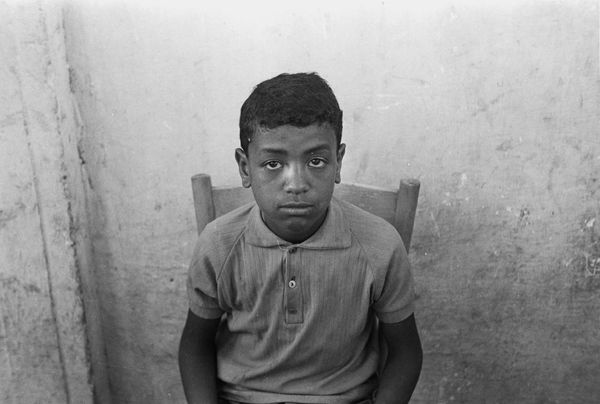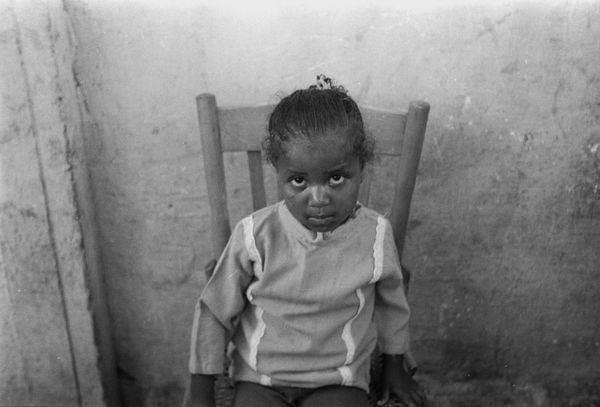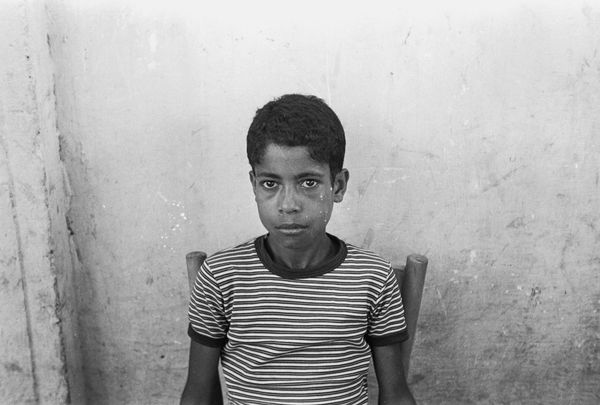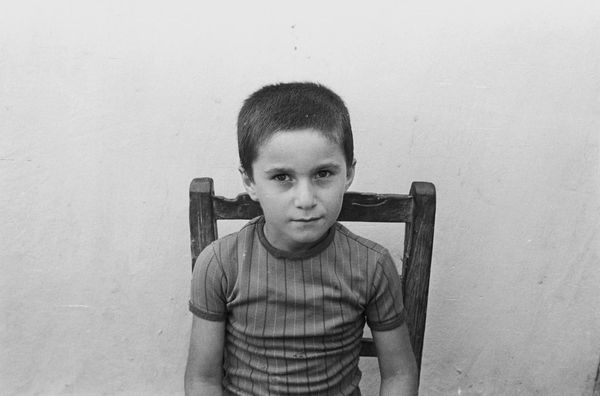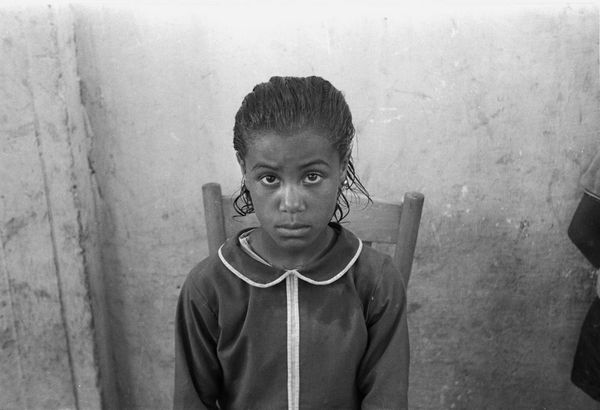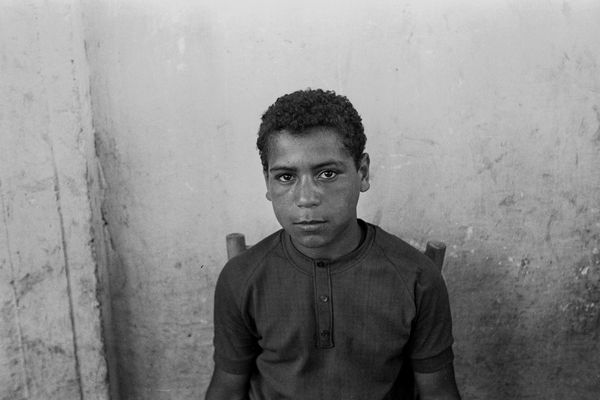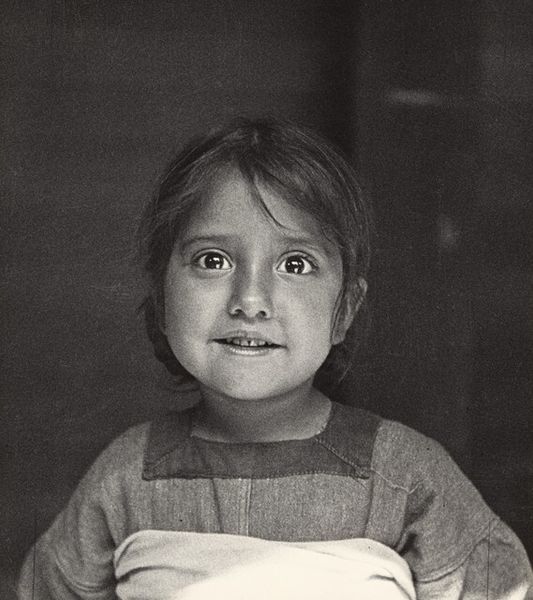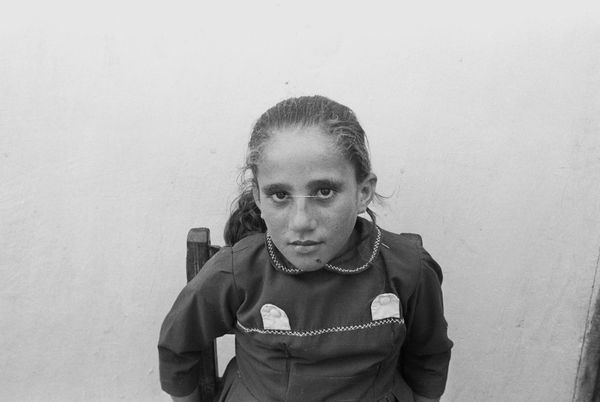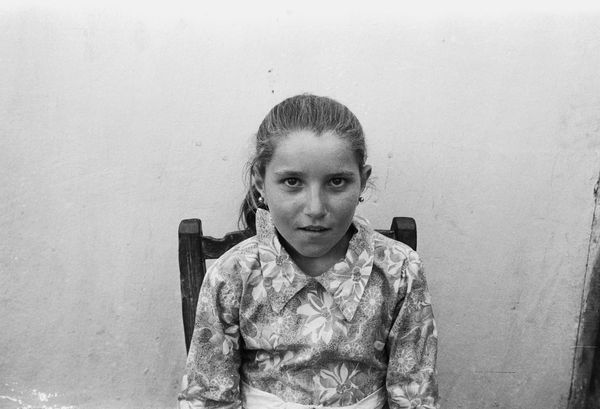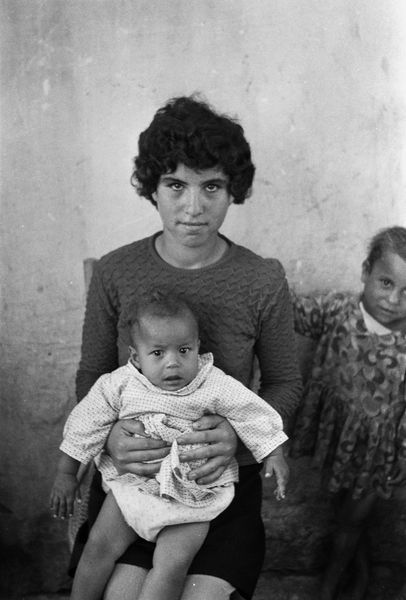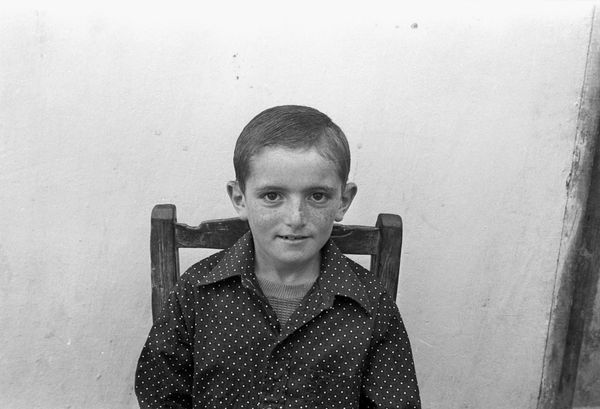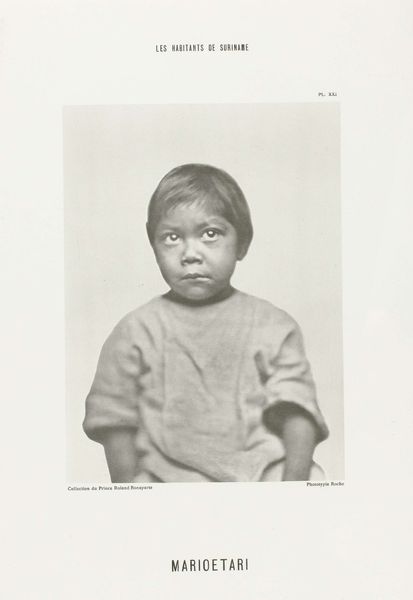
Dimensions: image: 190 x 289 mm
Copyright: © Akram Zaatari, courtesy Hashem el Madani and Arab Image Foundation, Beirut | CC-BY-NC-ND 4.0 DEED, Photo: Tate
Curator: Akram Zaatari presents us with a compelling image, "Anonymous. UNRWA school, South Lebanon, 1960s. Hashem el Madani," part of the Tate Collections. Editor: My first impression is one of stark simplicity. The composition is centered on this young girl, her direct gaze immediately arresting. Curator: It's a poignant visual document. UNRWA schools were established for Palestinian refugees, and this portrait speaks volumes about identity, displacement, and resilience within that historical context. Editor: Precisely. The raw materiality of the photographic print enhances the emotional weight. The limited tonal range and the imperfections in the backdrop amplify the sense of hardship and uncertainty. Curator: Indeed, the seemingly casual composition belies a deeper narrative. It prompts us to consider the politics embedded within the seemingly innocent image of a child in a classroom. Editor: Ultimately, Zaatari's curatorial approach elevates what might be seen as an ordinary image into an icon of collective memory and struggle. Curator: I concur. Through its formal qualities and its historical positioning, the work achieves a powerful resonance.
Comments
tate 8 months ago
⋮
http://www.tate.org.uk/art/artworks/zaatari-anonymous-unrwa-school-south-lebanon-1960s-hashem-el-madani-p79415
Join the conversation
Join millions of artists and users on Artera today and experience the ultimate creative platform.
tate 8 months ago
⋮
This work is one of a series of black and white silver gelatin photographs of varying sizes that are collectively titled Objects of study/The archive of studio Shehrazade/Hashem el Madani/Studio Practices. All of the photographs were taken by the Lebanese commercial photographer Hashem el Madani between 1948 and 1982 and compiled into the present group, 117 of which are in Tate’s collection, by the Lebanese artist Akram Zaatari. All of the photographs include people, either alone, in pairs or in small groups, and most were taken in Madani’s studio, although some were shot outside and in his subjects’ homes. The series features men and women and covers a wide age range from babies to elderly people. Almost all of the sitters assume poses deliberately for the camera, sometimes accompanied by props or costumes, and most gaze directly towards the lens. Many of the pictures show subjects interacting in various ways, including embracing, kissing and acting out scenes, such as a mock wrestling match. The photographs are mostly tightly cropped, with the sitter or sitters filling most of the frame, although in some cases the figures are positioned further away from the camera, for instance when shown sitting at a table or standing behind a chair. The photographs tend to have sparse backgrounds, often dominated by a blank posterior wall. They are mounted on white paper, displayed in plain white frames and signed on the back by Madani. Many of them have been organised into categories by Zaatari – such as a group featuring men dressed as Syrian resistance fighters and a collection depicting newly married couples – while the rest are presented individually. Zaatari has stated that although he prefers these groups to be displayed together, this is not a requirement (Akram Zaatari, email to Rachel Taylor, 24 April 2008, Tate Acquisition file).
